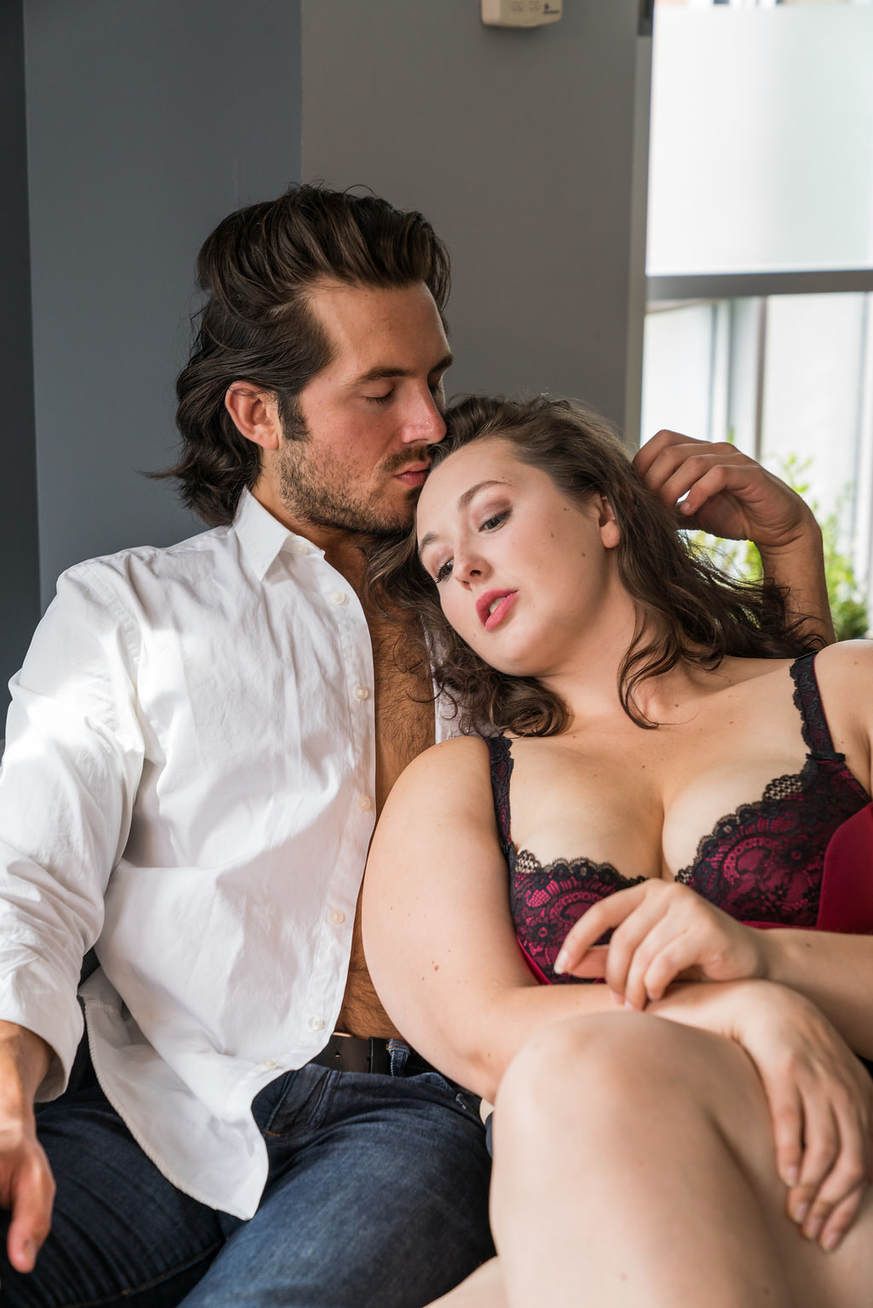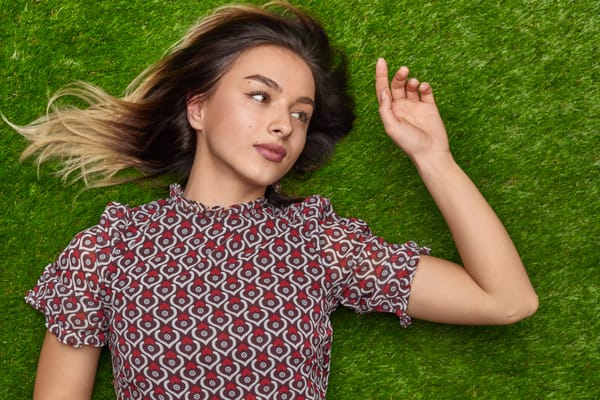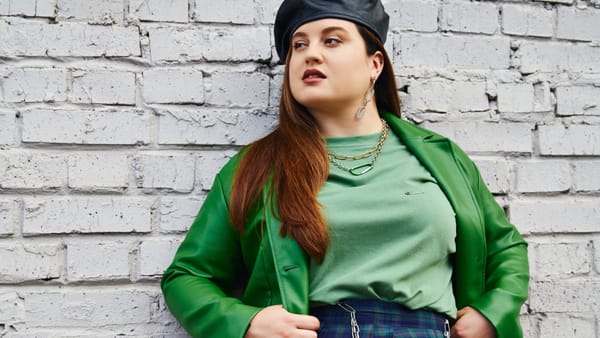His Abs, Her Curves
Every photo depicting a “happy” and “normal” relationship didn't include anyone that looked like me or even my partners. I then believed that because of what I saw, and what I was fed through the media, I was not worthy of a happy and normal relationship.

I don’t really remember the exact moment when he first told me that my weight was an “issue” for him. I don’t really remember body standards ever being a part of my dating experience until my first “real relationship.” I started dating my freshman year of high school, more specifically the summer before my freshman year. I'll say that I didn't notice that my body was different than the other girls in my class until the moment I started my first relationship. I remember asking my first boyfriend what the first thing he noticed about me was. He took a minute to think, and without real hesitation, he said, “Your chest.” I said, “My chest? You mean my boobs?!” He replied, “Yes, you have really big ones.” How poetic and romantic is that? I’m not sure what I was really expecting from a freshman boy in high school, but at that moment, I started to really evaluate my body.
This was especially true when it came to my future relationships. If we were intimate, what’s the first thing they went for? You guessed it, my chest. I then started noticing the media around me. I saw that many people in different advertisements didn't look like me. Every photo depicting a “happy” and “normal” relationship didn't include anyone that looked like me or even my partners. I then believed that because of what I saw, and what I was fed through the media, I was not worthy of a happy and normal relationship. I believed that, until I changed my body, “finding a good man” just wasn't in the cards for me. The media allowed for this unspoken rule in the dating game: Women are supposed to be smaller than the men they are with, and a man was supposed to be larger. Of course, there was a catch to this rule: A woman couldn’t be too small, or she was seen as “boyish,” and a man could be big but not “unfit” or “plus-size.” But, when I looked around my community and family, I saw a very different story. I saw love stories and relationships that looked incredibly different from what I was seeing in the pre-teen magazines. There were beautiful stories of love and loyalty that had nothing to do with the other person’s physical form. I wondered why I didn’t see this in the magazines. Why weren't there more stories like this flying off the shelves? I became fascinated with this idea and wanted to speak to the couples and singles in my life to find out their take on it.

Maggie, recently single, is society's standard of a “straight-sized” female. As a student and close confidant of mine, I wanted to ask about her experiences with dating and body expectations. Maggie started dating when she was around 16, but she “wouldn’t say that body type has affected her choice in a partner. “I mostly just care if the person is someone I want to spend my time with… What I find most attractive about another person is stimulating conversation and humor.” As a straight-sized female, Maggie believes that she has not experienced as much pressure as those with an unconventional body type. I wanted to know if she herself had ever broken up with anyone because of their body type or if her body had been a reason for the end of a relationship. “Hell no. I think if someone would break up with another human because of their size, they're not actually searching for a fulfilling relationship -- they’re just filling their time with superficialities.”
But what about someone who isn’t considered “straight-size?” I assumed that their experiences must be different. After speaking with Jackie, a professional musician and a plus-size female, I found that she, in fact, did have a different twist on body expectations and dating. “Dating for me hasn't been super serious or a thing for me,” Jackie explained. “I don't go into my friendships with guys as ‘Maybe we will date,’ and it never occurs to me that someone would date me because of my size.” Jackie is not the only plus-size female that I have heard this from, and there are even plus-size men who feel the same way. “I have never been told directly, but I can tell when my weight makes someone uncomfortable… Sometimes people won't invite me to stereotypical social events like clubbing or hiking, and they assume because of my body type that, I don't like or wouldn’t feel comfortable in a dating scene. No one has said it directly, but their actions do.” Jackie’s honesty with her experience supported my constant thought that there are these unspoken rules or standards correlating with body type and the dating world. However, does that hold true in relationships? In the dating world, there are different social standards that are being fed to women and men. What about after you start dating someone? The couples that you see walking around in your communities or the ones you grew up with, what about those relationships? Where are the body standards in those relationships? Can a plus-size male and a straight-size female have a healthy, functioning relationship? What about a plus-size woman and a straight-sized male? I wanted to learn more.

I spoke to two different couples. I had to go to the main source of my own role models for relationships: my mom and dad. As a straight-sized female and a plus-size male, my parents have been happily married for 32 years. However, they haven’t always had the bodies they had when they first met. I wanted to learn about their experiences with body standards and their own body types. My dad, John, has a Doctorate in Law, and my mother, Marci, has her Master’s Degree in Educational Nursing and Psychology. They met on a blind date and have been together ever since. “His body type was not the first thing I notice about him,” Marci explained. “I noticed how much he shared with me and wanted to create memories from the moment we met.” Marci continued, “Of course, as the times changed around us, I noticed that my feelings about my own body changed. We weren’t allowed to have breasts or hips as the fashion and advertisement industry changed.” Of course, John interrupted and said, “That never changed how I saw her, though. Even when her body changed, for example, when she was pregnant, I loved it.” John also shared that “her body type and my own body type were noticeable, but [they were] never a game changer for either of us. It wasn’t emphasized as much as I feel like it is now.” I thought this was beautiful, but it was certainly not the case with all couples. What about a plus-size woman and a straight-sized male? Would social media have a different effect on a couple of these body types?
I decided to find out for myself by talking to a couple named Byron and Karen. Karen would be considered by society’s standards as “curvy” or “plus-size,” while Byron is considered “straight-size.” The two of them have been together now for five years and are about to be married. “We truly believe we are both with the sexiest person alive,” Karen went on to tell me. “We’ve never felt that society’s standards should dictate how we feel about each other. I was originally surprised at how attracted I was to Byron since he was so different from the other men I have dated, although I think my attraction came from a deeper, more personal level.” Byron went on to describe that he “was definitely attracted to Karen physically at first… I have always had a specific type: curvier with dark features; Not sure why, but I’ve always found these women to be sexier.” Both Karen and Byron went on to explain that they have been open to more body types, but when they found each other, the ideals of body types really weren’t important. “We both think it would be awesome to see more mainstream media show plus-size women with thinner men, or the opposite since it actually depicts the relationship we have.” Karen and Byron are among many folks who I spoke with that wished to see more diversity in commercials and lifestyle advertisements that feature couples. If this is the case, then why don’t we see it more often? Is the world really ready to see diversity in romantic relationships?

Overall, this experience has led to more questions and the desire to learn more stories from all types of relationships. However, let me leave you with these thoughts. I want to be perfectly clear about the position and stance I hold in regards to body standards. I wanted to show two people who don't fit relationship norms, two people that together are beyond the physical standards seen in magazines and advertisements. I want to say that as a society, we hold unrealistic standards for our partners at times. Bodies are always changing, just like relationships change. I believe that we should be showing the beauty of relationships and self-care. What people fail to realize is that as a plus-size woman, I am not unhealthy or undesirable. There are couples out there that have different reasons for being together, and these reasons ultimately don’t correlate with the other person’s body type.
So what is the bottom line? People in our world have been fed ideas that they are “less than” and that in order to obtain happiness and love, they have to fit an idea set up by corporations. There are people who are so insecure with their own bodies that companies have thrived on these insecurities, particularly when it comes to relationships. I firmly believe that love is love and that loving someone else can only come when you love and accept yourself. This is what I want to see in my magazines. Real couples who are of all different shapes, sizes, and backgrounds, all with different interests. I believe that advertisements like these will help others connect, recognize themselves, and feel included in the conversation. We have to stop fetishizing plus-size women or men, and we should instead recognize that they are people that are worthy of love and relationships, just like anybody else. That is what this latest photo series represents -- a couple that you could see in your community but wouldn't necessarily see in a magazine. Well, now you can. I also encourage others to push this boundary by not just showing plus-size women with fit men, but with “plus-size” men, or “straight-sized,” or people of different races or backgrounds. We are missing out on some incredible love stories because at the end of the day, “his abs and my curves” shouldn’t be the only thing that brings us together.
Written by Jonna E. Capone
Jonna E. Capone is a plus-size model, writer, performer, body-positive activist, and an honored guest blogger of LoveUMagazine. Jonna has spent two years in New York City modeling and performing and spreading body positivity throughout everything she does. She has been a writer for HowlRound and was featured in American Theatre Magazine. Jonna hopes to continue to spread her message of positivity and acceptance through her blog, modeling and performing. You can find her latest projects on Instagram, Facebook and Youtube.





